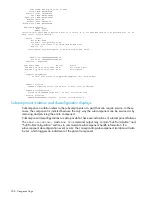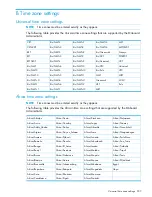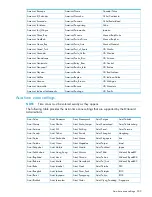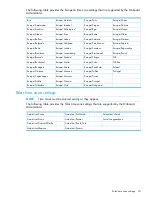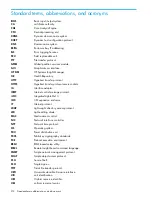
A Using event logs
Event logs are generated by software or firmware when an event is detected. Some events that
cause event records to be generated are:
•
Hardware-related.
◦
Example: fan or power supply failure.
•
Software-related.
◦
Example: indicating that software reached a certain point in the code, or that a certain
amount of time has passed.
The OA can timestamp and filter events, then store and transfer them to event log readers. Log
entries can be read by management applications in:
•
Operating Systems
•
OAs
•
SEL viewers
•
FPL viewers
•
Live Event viewers
•
EAE
Log entries can be cleared by OS management applications or by the OA itself.
Events are classified into a number of severity levels, ranging from critical failure to non-error
forward progress notification. The severity level is encoded in the
alert level
data field on an event
record. Different system actions may result from generation of an event record, depending on alert
level.
Text search
You can search the FPL and SEL event log viewers using text strings. Text search capability includes
the ability to search using regular expressions.
Live viewer
The live event viewer provides a way for you to see records as they occur. The OA supports multiple
simultaneous live event viewers that are created and destroyed dynamically when requested. The
maximum number of simultaneous live event viewers is limited by the number of connections
supported by the OA.
Each live event viewer works independently from any other event viewer, meaning that each live
event viewer can select its own filter and format options without affecting other live event viewers.
The log can be filtered using the following items:
•
blade number
•
cabinet number
•
partition number
•
alert level
The following format options are also available:
•
Keyword – This is the default format for all viewers. The keyword format supplies the following
information about an event:
◦
log number
◦
reporting entity type
◦
reporting entity ID
Text search
197
























